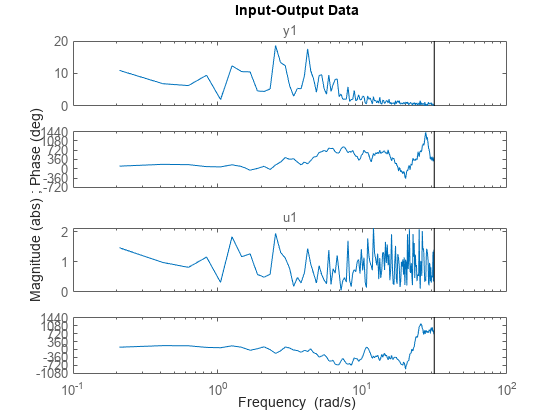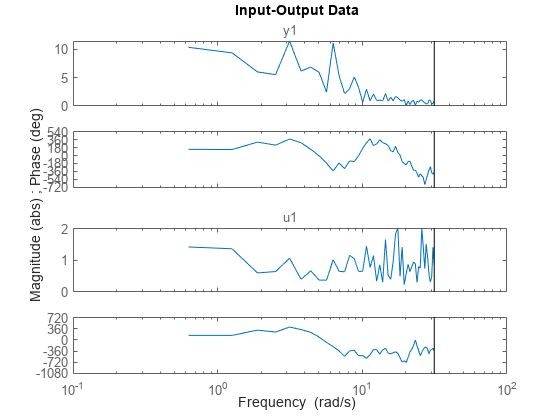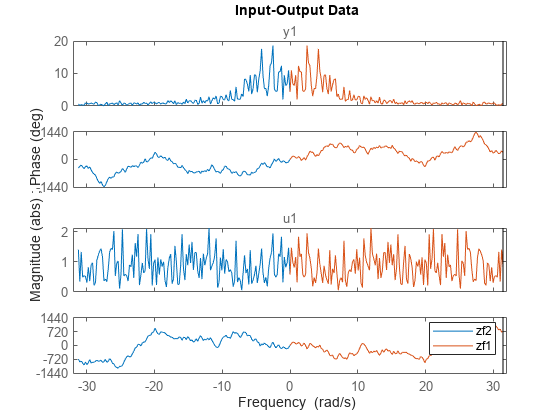fft
Fast Fourier transform (FFT) of iddata object
Description
datf = fft(data)iddata object data to the frequency
domain iddata object datf.
data contains real-valued signals and has constant sample
time Ts, and datf has frequency values equally
distributed from 0 to the Nyquist frequency. The Nyquist frequency is included if
the signal length is even and not included if the length is odd. To preserve the
signal power and noise level, FFTs are normalized by dividing each transform by the
square root of the signal length.
datf = fft(data,N)N. In the default case, the
length of the transformation is determined by the signal length. Including
N forces the FFT transformations to pad with zeros if the
signals in data are shorter than N and
truncate the signals otherwise. Thus, the number of frequencies in the real signal
case is (N/2)+1 when N is even or
(N+1)/2 when N is odd.
If
data contains several experiments, N
can be a row vector of corresponding length.
Examples
Input Arguments
Output Arguments
Tips
fft does not produce the same answer as the base MATLAB®
fft function.
For real signals, by default,
fftcomputes the FFT for only the positive portion of frequency range. MATLABfftcomputes the FFT for the entire frequency range.fftscales the result by1/sqrt(N), whereNis the data length. MATLABfftdoes not apply scaling.
Version History
Introduced in R2007a



